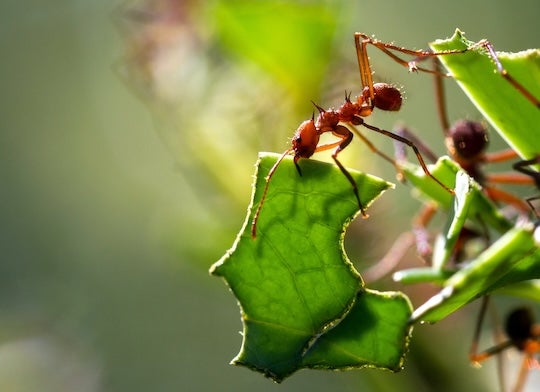
Scott Solomon, a teaching professor of biosciences at Rice University, has played a key role in a study by the Smithsonian National Museum of Natural History, which provides new insights into a unique relationship between ants and fungi. The research, published in Science Oct. 3, finds that a group of ants began farming fungi 66 million years ago, coinciding with a mass extinction event.

“The timing for the origin of agriculture in ants suggests that this complex behavior may have come about as a consequence of the upheaval that took place following the asteroid impact that killed the dinosaurs and many other species,” said Solomon, a co-author of the study who is affiliated with the museum. “In a world filled with death and decay, growing fungi for food would have suddenly become a very good strategy.”
The study uses the world’s largest genetic dataset of fungus-farming ants and fungi, including data from 475 species of fungi and 276 species of ants, according to a press release by the museum. The samples, many gathered by Solomon, span Central and South America. Genetic analyses allowed researchers to pinpoint the timing of critical events in the history of fungus farming by ants.
As Earth’s climate began to cool 27 million years ago, some ants developed more advanced agricultural techniques, according to the release. The fungi cultivated by one group of ants became domesticated, losing the ability to live outside the ants’ nests. Among the ants that grow domesticated fungi are leafcutter ants, which harvest fresh plant material to cultivate their fungi and are considered major agricultural pests.

“In addition to helping us develop new ways to manage them as pests, studying ants that have been farming fungi for such a long time — far longer than humans have been farming crops — suggests that we may be able to learn practical lessons from ants that could benefit our agricultural practices," Solomon said.
Led by Ted Schultz, the museum’s curator of ants, the international team of researchers has provided a deeper understanding of how these insect-fungal partnerships have evolved across millions of years, adapting to shifting climates and ecosystems.
For more details, please see the full press release by the Smithsonian National Museum of Natural History.

